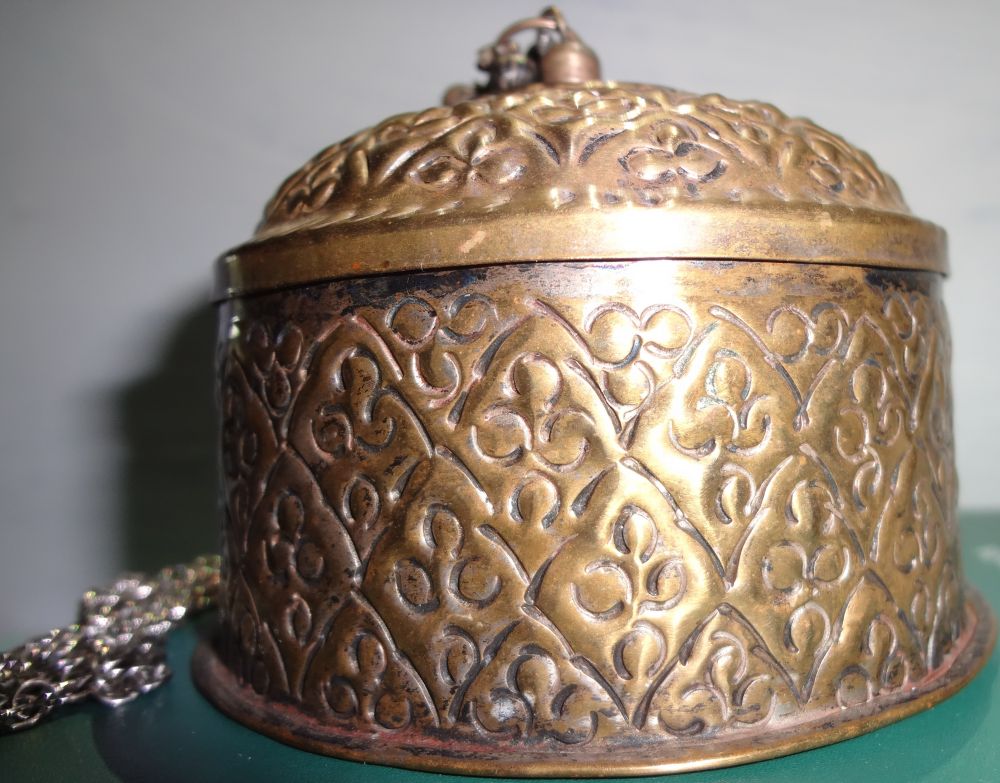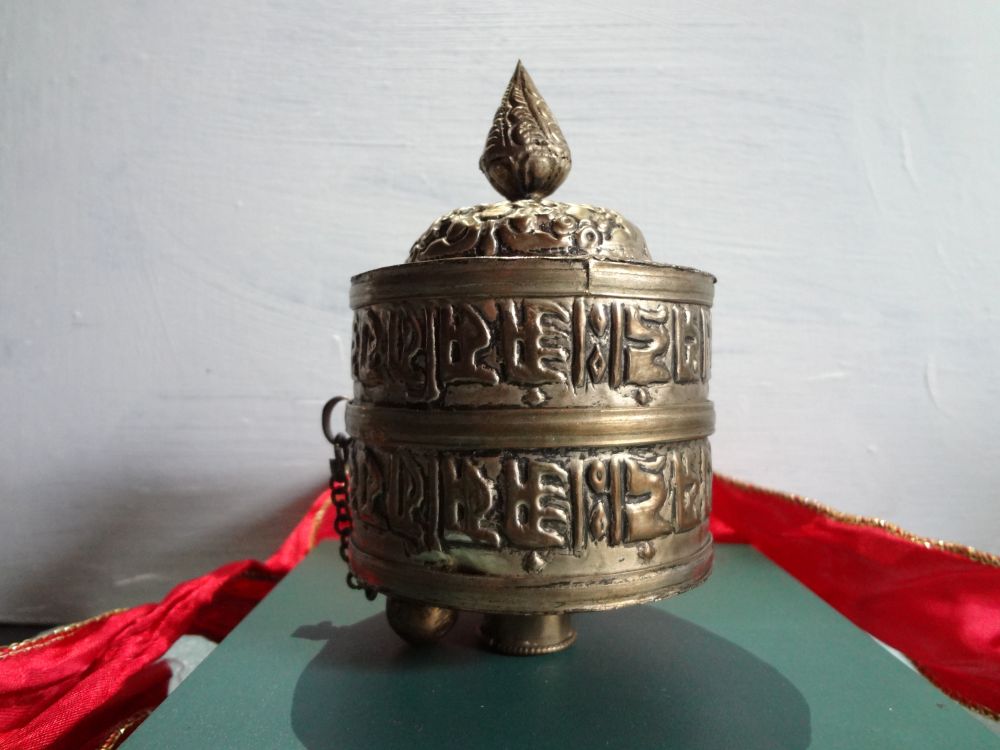正文



A rare antique Tibetans’ ritual item called Tibetan prayer wheel brought to USA by a commissioner in early 1900's. Prayer wheels are also called Mani wheels, either a small hand wheel or large wheels with millions of copies of the mantra inside, are found everywhere in the lands influenced by Tibetan Buddhism. The earliest known mention of prayer wheels is in an account written by a Chinese pilgrim, in 400 AD, while travelling through the area now known as Ladakh. The idea has its origins in a pray practice on the Gautama Buddha phrase “to turn the wheel of the law” meaning “to teach Dharma“ which refers to the event that Buddha beginning to preach. The most common prayer’s sentence is to repeat the written form of the mantra carved on a Mani wheel, Om Mani Padme Hum, out loud or silently, or just view these words, which invokes the powerful benevolent attention and blessings from the Buddha.
六字真言 藏胞们认为修行悟道的最重要条件就是勤于念经。因此,他们把来生幸福的希望寄托在念经上。除了张口说话、饮食及睡眠外,无论坐卧立行走无不喃喃念经。在众多经类中,边摇转经筒边念得最多的是“六字真言”:唵、嘛、呢、叭、咪、吽。 六字真言为藏传佛教名词,据说是佛教秘密莲花部之“根本真言”。它包含佛部心、宝部心、莲花部心及金刚部心等内容。“唵”,表示佛部心,谓念此字时,自己的身体要应于佛身,口要应于佛口,意要应于佛意,所谓身、口、意与佛成一体,才能获得成就;“嘛呢”梵文意为“如意宝”,表示“宝部心”,据说此宝出自龙王脑中,若得此宝珠,入海能无宝不聚,上山能无珍不得,故又名“聚宝”;“叭咪”,梵文意为“莲花”,表示“莲花部心”,以此比喻性如莲花一样纯洁无暇;“吽”表示“金刚部心”,祈愿成就的意思,即必须依赖佛的力量,才能得到“正觉”,成就一切,普渡人生,最后达到成佛的愿望。
评论
目前还没有任何评论
登录后才可评论.




